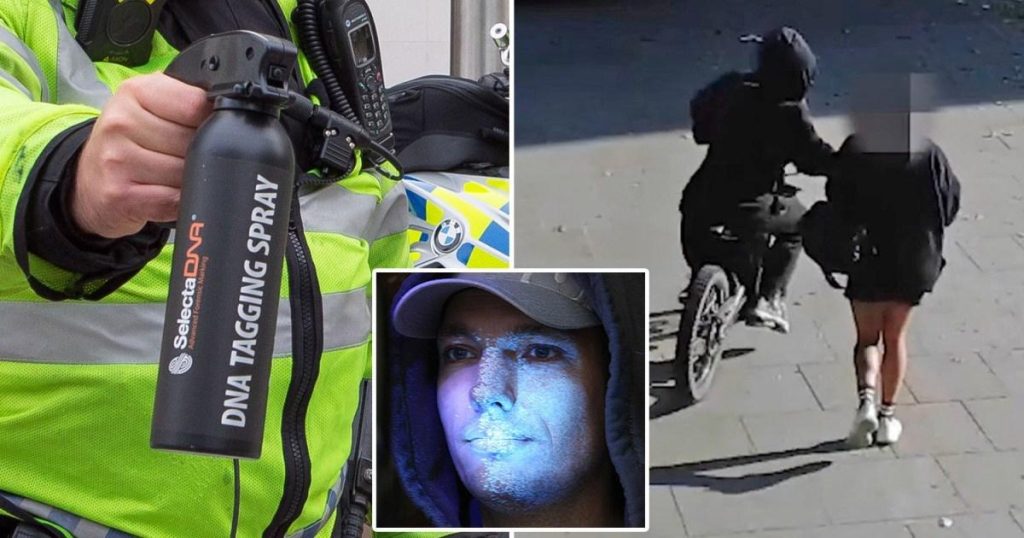The Metropolitan Police’s New Weapon Against Phone Snatching: DNA Tagging Spray
The Metropolitan Police Service has unveiled a new tool in its fight against the escalating problem of phone snatching in London: a DNA tagging spray. This innovative technology, developed by forensic marking company SelectaDNA, is designed to mark offenders with a unique, long-lasting identifier, linking them irrefutably to the crime scene. The spray contains a synthetic DNA solution that is invisible to the naked eye but fluoresces a bright blue under UV light. This allows officers to easily identify suspects and connect them to specific incidents, even months after the crime has occurred. The spray can be used to mark not only the offenders themselves but also their clothing and vehicles, providing multiple avenues for identification. This new weapon is being deployed by the Waterloo & Southbank Neighbourhood Team, a unit that has witnessed the dramatic 150% increase in phone snatchings across London over the past year, a statistic that translates to one phone stolen every six minutes in the capital. The team secured funding for the spray guns through a Home Office project, demonstrating a commitment to addressing this pervasive crime.
This tagging spray offers several advantages in combating phone theft. Firstly, the long-lasting nature of the marker significantly extends the window of opportunity for apprehending offenders. Unlike traditional methods that rely on immediate capture, the DNA tag persists for months, allowing police to connect suspects to past crimes even if they are not caught red-handed. Secondly, the unique DNA signature provides indisputable evidence linking the individual to the crime. This eliminates ambiguity and strengthens the prosecution’s case. Thirdly, the spray acts as a deterrent. The knowledge that they can be easily identified and linked to their crimes, even if they escape the immediate scene, may discourage potential thieves from engaging in phone snatching. Finally, the spray’s compatibility with police dog training offers an additional layer of detection. Canines can be trained to recognize the scent of the SelectaDNA markers, further enhancing the chances of apprehending offenders.
The implementation of this technology comes as the Metropolitan Police intensifies its efforts to combat the rising tide of phone theft in London. The force has been actively pursuing and prosecuting individuals involved in these crimes. In a recent case, a man and two teenagers were sentenced for their participation in phone snatchings amounting to over £20,000. This case underscores the seriousness with which the police are treating this issue. Commander Owain Richards, who leads the charge against mobile phone theft in London, emphasized the significant impact these crimes have on victims, often involving both invasion of privacy and violence. He reiterated the police’s commitment to protecting Londoners and making the capital safer.
Beyond the use of DNA tagging spray, the Metropolitan Police are employing a multi-pronged approach to address phone theft. This includes utilizing data analysis and technology to track stolen devices and build intelligence on offenders. They are also collaborating with phone manufacturers to "design out" the possibility of stolen phones being reused or resold, effectively disrupting the criminal market that thrives on these thefts. Furthermore, the police are encouraging victims to report thefts immediately, enabling swift investigations and increasing the likelihood of recovering stolen devices and apprehending perpetrators. This comprehensive strategy reflects the Met’s dedication to tackling this growing problem and ensuring the safety and security of London’s residents.
The DNA tagging spray represents a significant advancement in the fight against phone snatching. Its unique properties, including its long-lasting nature, indisputable evidence provision, and deterrent effect, make it a valuable tool for law enforcement. The integration of this technology with police dog training further strengthens its effectiveness. This innovative approach, combined with the Met Police’s broader strategy of data analysis, collaboration with phone companies, and prompt response to reported thefts, demonstrates a strong commitment to curbing phone snatching and creating a safer environment for Londoners.
In conclusion, the Metropolitan Police’s adoption of DNA tagging spray marks a significant step forward in tackling the escalating problem of phone snatching. This technology, along with the force’s wider strategy, aims not only to apprehend offenders but also to deter potential thieves and disrupt the criminal networks that profit from these crimes. The combination of innovative technology, proactive policing, and community engagement offers hope for reducing the incidence of phone theft and making London a safer place for all.




